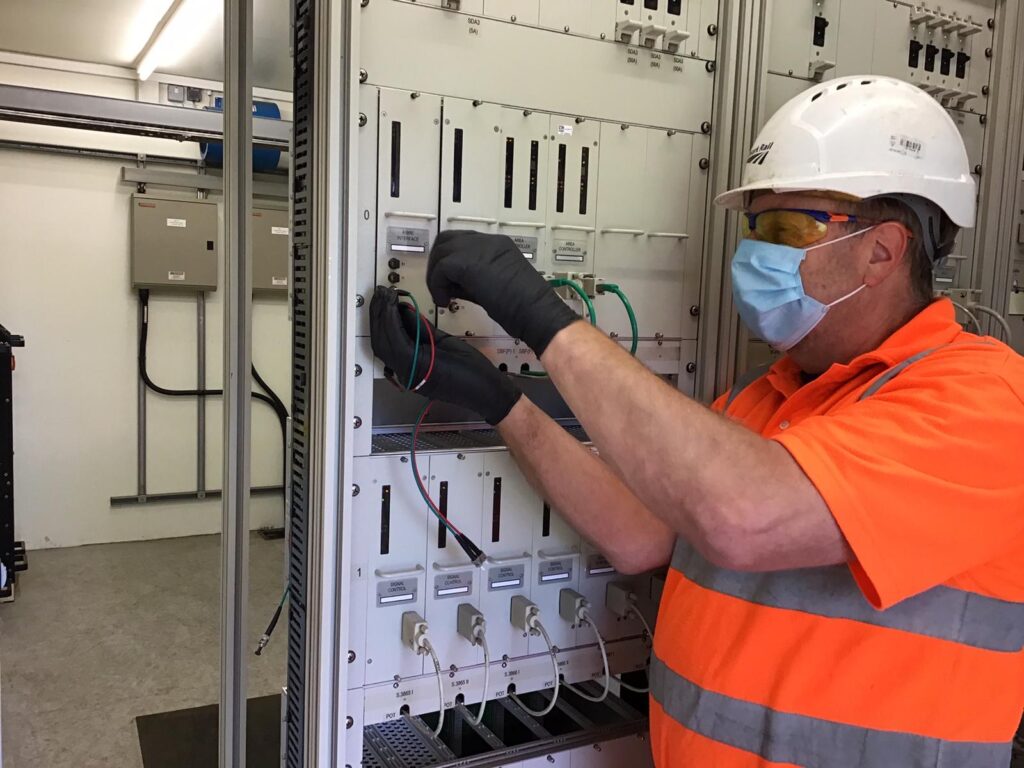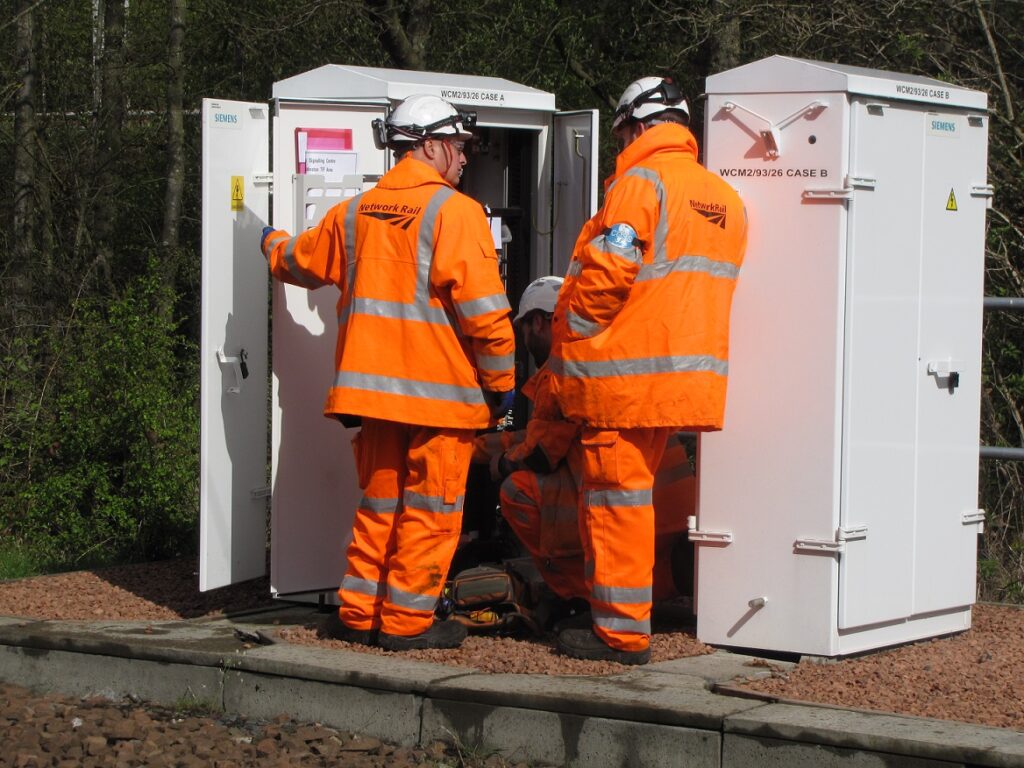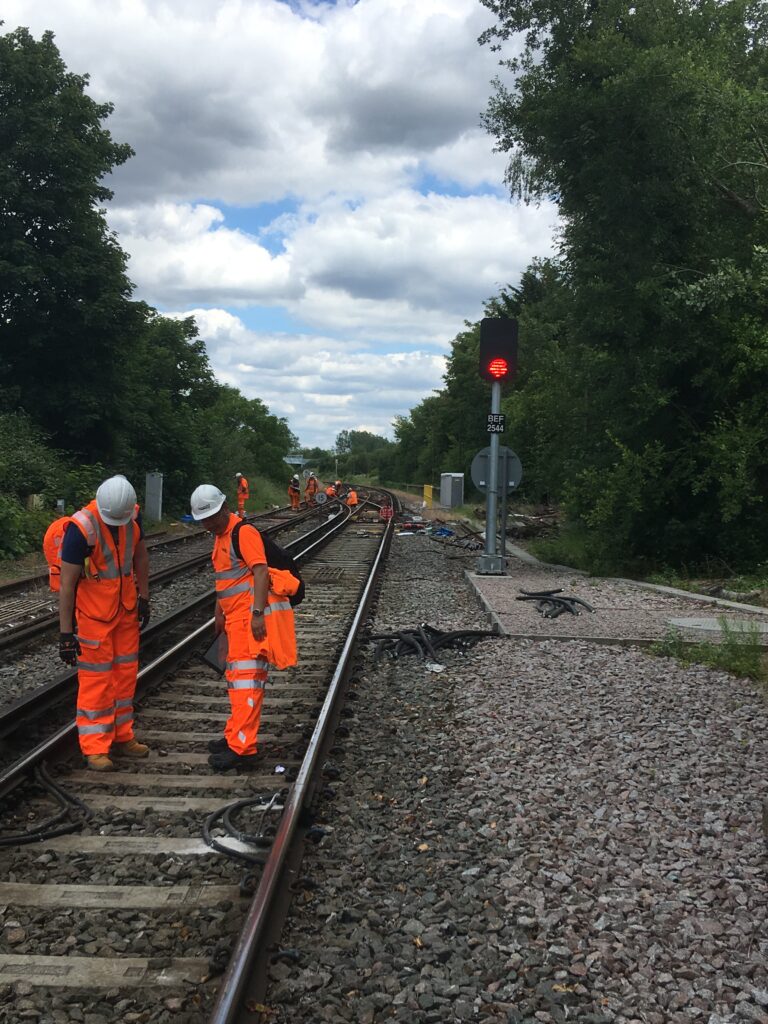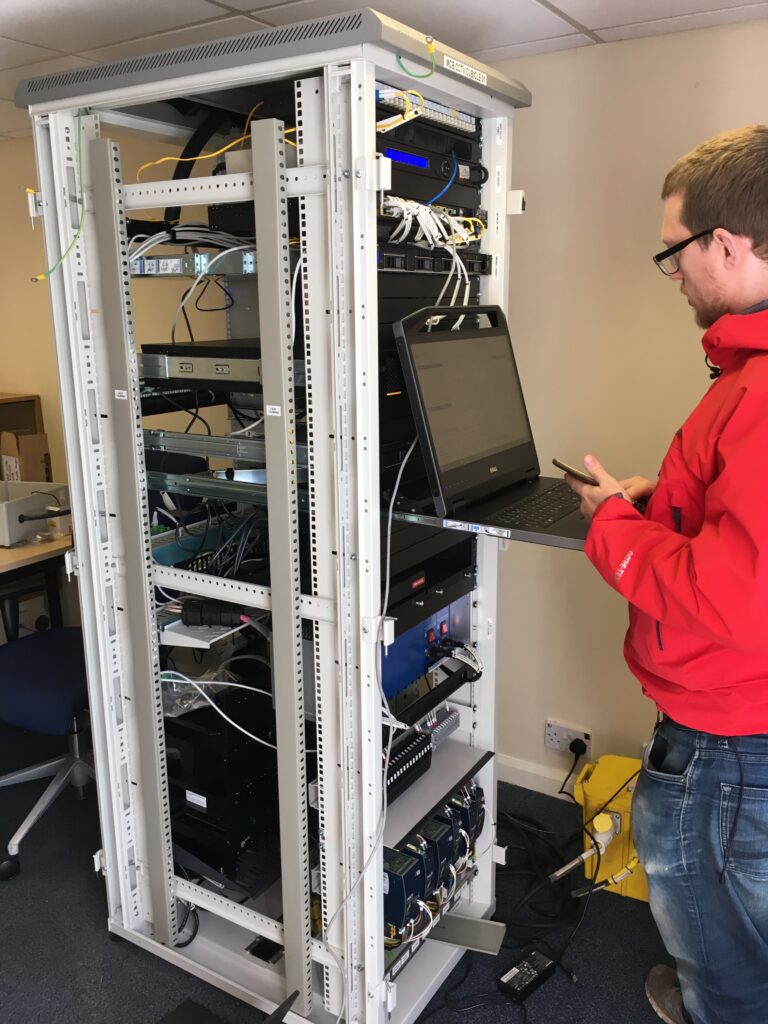Whenever an intervention involving working on or near to an active safety critical signalling item of equipment takes place, the safety integrity failure risk of the signalling system increases. This risk of failure must be managed by robust testing of the equipment before it is returned to service. Following a concerning trend in the rise of signalling failures caused by poor testing, Rail Engineer met with James Dzimba, chief control command and signalling engineer Network Rail, to hear how the competency of people who test signalling maintenance work is being improved.
The testing of signalling equipment has always been very important and the more complex signalling systems become, the more essential it is that robust testing is carried out after any intervention has taken place, however small this may be.
The Signalling Works Testing Handbook (SWTH) describes the procedures and process controls for new and altered signalling installation that involve conceptual design, or with the potential to affect the fitness for purpose of signalling infrastructure. When routine maintenance or a failure requires equipment changed to ‘like for like’, and the signalling equipment has previously worked correctly, Signal Maintenance Testing Handbook (SMTH) procedures and process controls apply.
SMTH processes are less complex than SWTH and provide for simple changeovers to be carried out quickly and efficiently. Although such testing has a simpler method of working, the processes and culture must remain the same. Tasks intended to control the risk of errors, such as correlation checks, component examination, and post-work testing, must be completed in accordance with the relevant instructions. SMTH also plays a vital role in work such as track or point renewals, so it may also apply to the renewal of other assets. SMTH is also used by non-Network Rail staff to keep the railway safe.

Competence and behaviour
Competency can be described as the combination of training, knowledge, skills, experience, behaviours, and attitude, and the ability to apply these factors to perform a task. SMTH competency therefore involves more than simply completing and passing an SMTH course.
It is therefore essential that everyone who holds SMTH competency is able to resolutely and consistently carry out the defined tests contained within the handbook, and that they are fully aware of the escalation procedure when these procedures cannot be applied or the requirements of the standard are not met. They must also have the confidence and necessary behaviours to carry out the escalation procedure.
In 1988, a collision occurred at Clapham Junction when a train driver received a proceed aspect at a signal which should have been at danger. The incorrect proceed aspect was shown because inadequate working practices had resulted in a loose, uninsulated, redundant wire coming into contact with another circuit. Thirty-five people lost their lives and 484 were injured. The resultant public inquiry led to major changes with signalling design, installation, and testing processes, including the introduction of SWTH and SMTH.
In the past?
To many in the industry, the Clapham collision was a long time ago and a similar thing happening again with the industry standards much improved is hard to imagine. However, over time many things can change, and the railway of today is organised far differently, with many independent organisations carrying out SMTH work. Today’s railway is also far busier and technicians can face pressure to gain access to the railway and restore failed equipment in the shortest possible time.
James explained that Network Rail’s assurance activity, which monitors wrong side signalling failure data, had identified a rise in signalling failures caused by inadequate SMTH testing. The Rail Accident Investigation Branch (RAIB) found in its investigation of a wrong side signalling failure and derailment at Dalwhinnie in Scotland in 2021, that some electrical connections not needed for the location were retained inside a point machine following its replacement nine months earlier.
The need to alter the internal wiring of the machine for its intended use was not identified when the renewal work was planned, nor did the prescribed checks required as part of a like-for-like replacement SMTH process identify the wiring discrepancy. The work was also interrupted, and the testing work was overlooked. A similar event had occurred in the 1970s, which suggested that the corporate memory and lessons from the past were fading.
On 26 October 2022, at Wingfield, Derbyshire, two following trains entered the same signal section due to an incorrect aspect sequence being displayed to the drivers of both trains. Ballast cleaning works undertaken in the area required disconnection at DY586 signal and associated equipment. When the signalling system was reinstated following completion of the track works, the yellow and red aspects on DY586 signal were transposed.


The incorrect aspect sequence resulted in the first train passing the signal at red when it should have been yellow, and a yellow aspect shown to the following train when there was a train in the forward section. Testing steps in the SMTH process would have identified the transposition of the aspects had they been followed correctly. On this occasion the SMTH testing was not carried out by Network Rail maintenance staff, but by a competent SMTH contractor.
RAIB initially decided to publish a safety digest following the incident, but having assessed further evidence it has decided to carry out a full investigation. This will seek to identify the sequence of events, the roles, responsibilities, and competence management of the staff involved, the factors that influenced their actions, and the planning and testing processes. It will also consider any underlying management factors, including the response to RAIB’s recommendations made in its Cardiff East Junction (RAIB report 15/2017) and Waterloo (RAIB report 19/2018) investigations.
It is concerning to many in the industry and RAIB that there have now been several incidents over the last five years, where the integrity of the signalling system has been compromised by an incorrect application of the SMTH processes.
SMTH improvements
James explained what has already been put in place to mitigate the risk of poor SMTH testing and what is further being implemented to improve testing competency.
A recommendation from the RAIB investigation into a collision at London Waterloo in 2017 required that the competence of signalling staff includes the attitudes and depth of understanding to properly appreciate the importance of applying all the relevant testing processes. Network Rail has worked with the Institution of Railway Signal Engineers (IRSE), signalling contractors, and other infrastructure managers to reinforce the attitudes and depth of understanding needed to safely apply technical skills and knowledge.
This included the education of existing staff, managers, and future recruits to promote a better understanding of industry processes, with improved behaviours and understanding of how the lessons learnt from previous accidents have established today’s good practice. People need to understand not only how to do testing, but they also need to fully understand the risk they are controlling and why the testing is required, what the consequences could be with not completing the testing, and what they must do if the testing is not completed.
The establishment of non-technical skills to control SMTH risk has resulted in the introduction of seven training modules, including town hall and local briefings. One objective is to empower people with the confidence to ‘speak up’ and to communicate the consequences of not completing the required testing concisely and confidently when under time pressure. The non-technical ‘soft skills’ learning material has also been made available to the industry at no charge.
Third party assessment
To gain SMTH competency, a technician must pass an SMTH course followed by six months of mentoring followed by a practical assessment. To maintain the SMTH competency in Network Rail, technicians were re assessed every two years via the Network Rail Assessment in The Line (AiTL) process and the technician’s line manager. To strengthen the assessment process, the AiTL SMTH assessment has now been replaced with a third-party assessment process. This now provides an independent assessment of a technicians competency.

There are over 200 individual competencies a signalling technician could be expected to hold. These are in the process of being streamlined and targeted to focus on the right underpinning knowledge technicians require to do their job, and they will be trained for only the equipment they work on. Training course materials and standards are also being reviewed to make sure the content is up to date and to make them modular to make them easier to be updated and changed. Work is ongoing, with the initial standards changing from December 2023.
Network Rail has recognised that the SMTH training, assessment and competency framework improvements needs to apply right across the industry, so it is engaging with many in the industry to change and improve SMTH processes, including the training and assessment processes.
Within Network Rail, James explained how it has also changed the way the technician’s surveillance check by section managers’ is undertaken as part of normal day-to-day activities. This is now able to better support a technician achieving their IRSE licence and has resulted in better IRSE license applications and an increase in the number of licences being approved.
Chain of command
At the time of the Clapham collision in the British Rail days, the line management from technician to board level consisted of experienced signal engineers, but this is no longer necessarily the case. In today’s railway, a signalling technician could be managed by several layers of management who have no signalling engineering knowledge or experience.
James explained this is why there is a strong ‘dotted line’ of professional signalling line of responsibility from the local signalling maintenance engineer, via the route / regional signal engineer, through to the chief engineer. This is also why it is important that SMTH holders can concisely communicate the consequences of not completing the required testing when under time pressure.
Achieving consistency
Network Rail is working to improve SMTH training materials and assessments to achieve consistency throughout the industry. This will also have the objective of encouraging non-Network Rail technicians to gain an IRSE licence, for example by providing them with an IRSE log book. This is important as the uptake of IRSE licensing outside of Network Rail is low. Discussions are also underway to identify an independent training and competence assurance organisation to provide further assurance of SMTH training throughout the industry.
A common industry Sentinel SMTH Authority to Work will be introduced. Sentinel is the rail industry’s Authority to Work system to enable people to work safely on the infrastructure, which is owned and run by Network Rail, for the industry.
SMTH is also being ‘digitalised’ with the introduction of eSMTH to improve knowledge and communications. This is already on trial at Network Rail and the next step will be to make eSMTH available to everyone who holds SMTH competency. Hopefully, this will be available during 2024 once the IT, GDPR, and firewall issues have been addressed.
Improvements to the SMTH processes in Network Rail and throughout the industry are welcome, especially after the incidents at Dalwhinnie and Wingfield, which could have (but thankfully didn’t) result in a serious collision like Clapham all those years ago.


